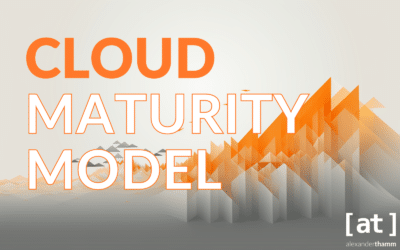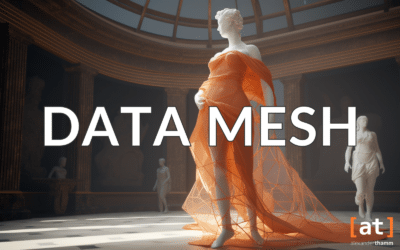Where do you stand with the digital transformation in your company? A data maturity assessment helps to determine the status quo and plan the next steps.
Companies planning the next step in digital transformation must first determine how well their organisation is positioned in the data space. To do this, they need precise knowledge about possible uses of data as well as a strategy for prioritising relevant and implementable use cases. For concrete implementation, a sound assessment is also needed on whether you need to hire new staff or can upskill your existing workforce for this purpose. Extensive questions about whether your organisational structure is sufficiently equipped for data projects must also be clarified in advance. Information on all these central aspects is provided by the Data Maturity Assessment.
Link tip: Every data-driven company needs specific data skills and Data Roles in the organisation. You can find out what these are in our article.
Inhaltsverzeichnis
What is a "Data Maturity Assessment"?
Determination of the digital maturity level
Formulation of an individual target picture
Recommendations for management action
More and more traditional corporations, companies and businesses want to become data-driven enterprises. The path of this transformation begins with a Data Maturity Assessment - i.e. the determination of the digital maturity of the company. The maturity level of a company is determined on the basis of all relevant dimensions that are necessary for the implementation of data-driven projects.
Every data-driven project builds on prerequisites of the following five dimensions:
- The organisational structure
- The Use Case Pipeline
- Den Data Roles
- The Data Governance
- The system landscape
Link Tip: Data governance is one of the five dimensions of data-driven projects that often receives too little attention.
Added value of a Data Maturity Assessment
Measuring the level of digital maturity on the way to a data-driven company brings several advantages. First, knowing the status quo of the digital transformation ensures knowledge of where Concrete backlog is to fulfil all the requirements to successfully carry out data-driven projects.
In addition, a individualised target picture worked out - because not every data-driven company ends up looking exactly the same. This also includes developing an agile data strategy tailored to the respective company. Finally, it is determined what the next steps are in each dimension to implement the first data-driven projects. Both concrete action impulses for the management are derived from this.
Our service
Benefit from the intensive insight we have gained in the course of over 500 data science projects in a wide range of companies and enterprises in Germany. During our 5 years of experience, we were able to get to know the different levels of maturity and the corresponding requirements. This wealth of experience taught us to quickly recognise the strengths and weaknesses in organisations. At the same time, we were able to test the best practices and accurately derive the associated dimensions.
We conduct the Data Maturity Assessment in the context of a one-day Workshops through. In this workshop, we measure the status quo on the basis of the 5 relevant dimensions and define your individual target image together. As part of the workshop, we also impart specialist knowledge about the 5 dimensions of data-driven projects:
- the organisational structure,
- the use case pipeline,
- the Data Roles,
- Data governance and
- the system landscape.
When analysing the organisational structure, for example, the following questions are asked and answered together:
- Is there a central data unit? If not, where should the data unit be located in the company and what interfaces will there be? Should it be centralised or decentralised?
- Have the responsibilities in the area of data been clarified? Is there a CTO?
- Are knowledge management processes defined? Is there internal communication and exchange on ongoing data projects? Are there "bridgeheads"?
- Is there a demarcation in terms of content between Big Data vs. BI vs. Advanced Analytics?
- Which "business model" should the data unit follow? (Cost vs. profit centre)
At the end of the workshop, you will receive detailed documentation for follow-up combined with concrete recommendations for action for the next steps for each of the five dimensions.










0 Kommentare